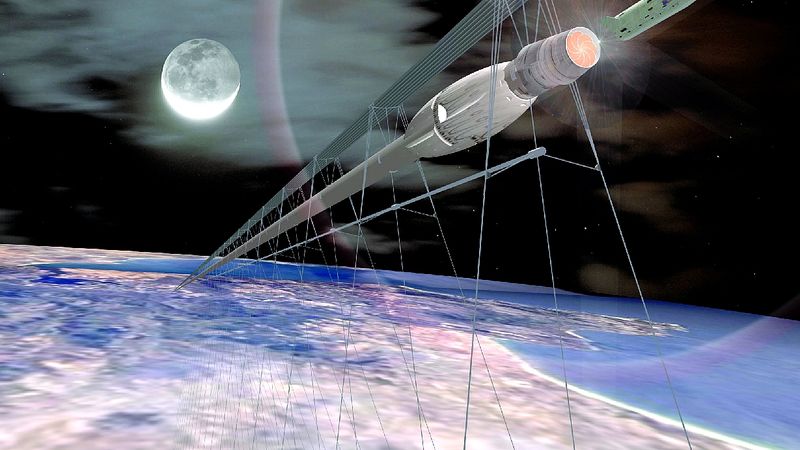Startram: All Aboard the Train to Space
Startram is a concept mass driver that can launch payloads into space without rocket propulsion, instead relying on magnetic levitation (maglev) technology.

Startram launching a payload into space (source: Startram.com)
This article was discussed in our Next Byte podcast.
The full article will continue below.
To date, mankind's space missions have relied on variants of the same core technology: rocket propulsion. However, there are numerous drawbacks associated with rockets that leave a lot of room for innovation, which include:
- high costs - despite recent cost reductions, it still costs ~$1000 per kg of payload to launch things into space
- environmental impact - combustion of rocket fuel is harmful to the atmosphere
- limited launch rates - launches are typically limited to one every few days, depending on rocket setup time and weather constraints
Startram is a concept technology that could address many of those concerns using magnetic levitation (maglev) technology. In theory, the launch cost for each pound of Startram payload could be as low as $44 per kg. It also uses only around $1 per kg on launch energy - significantly less than a traditional rocket launch, and can be operated at high-frequency, with over 10 launches per day.
Startram was developed by James Powell, one of the inventors of maglev, who originally created the technology for trains. Maglev technology relies on two sets of permanent- or electro-magnets: one that levitates the mass off the ground, and another that propels the elevated mass forward. Maglev trains are known as some of the fastest in the world, thanks to the reduced friction compared to traditional rail tracks.

The Gen 1 Startram launch system (while purely hypothetical at this point) would use an underground vacuum tube with a maglev rail inside – commonly referred to as a hyperloop – that is ~130km long and 2m in diameter. This underground hyperloop would connect to a launch tube that would extend into a ramp that exits earth's surface at about a 10º angle above horizontal. This whole system would exist at a mountaintop, around 6,000m above sea level, allowing a payload that exits the Startram system at around Mach-25 (twenty-five times the speed of sound) to enter low earth orbit. The forces subjected on the payload in the Gen 1 Startram system are theorized to be greater than 20g (twenty times Earth's gravity), which would limit its use to unmanned payloads only.

Alternative versions of the Gen 1 Startram system (like the Gen 1.5 and Gen 2 iterations) have been developed to find a low-force alternative that could be used for human space travel. Most of these include a longer, wider hyperloop tunnel that could accommodate a larger spacecraft with humans onboard. It also relies on a much longer, elevated ramp that would extend the maglev rail into the upper atmosphere to reduce the exit velocity required to enter low earth orbit (thus reducing the maximum forces on the payload). While Gen 2 is less likely to be implemented than Gen 1 due to even higher cost and complexity, it is interesting to note that the marginal cost of using the system to launch people into space would be vastly less expensive than current methods, at around $13,000 per person (as opposed to the going rates of $250,000 and $51M with Virgin and SpaceX, respectively).
All in all, the marginal launch costs of the concept Startram system could cost up to 22x less than current rocket propulsion, while also using 5x less energy and operating at more than 10x current launch frequency. In concept, it seems like a viable alternative to rocket propulsion for space travel. However, there are considerable drawbacks that are limiting Startram's immediate implementation, including:
- investment cost - while marginal launch costs are low, the startup and construction costs are estimated to be around $60B
- power generation and delivery - the Startram system would require up to 100GW peak power during a lunch
- cost of tunneling - underground hyperloops are prohibitively expensive and challenging to create at the moment
- unmanned payloads only - the high g-forces that payloads are subjected to precludes the use of the system for humans and other delicate payloads (unless there are major modifications, like those of the Gen 1.5 and Gen 2 systems)
